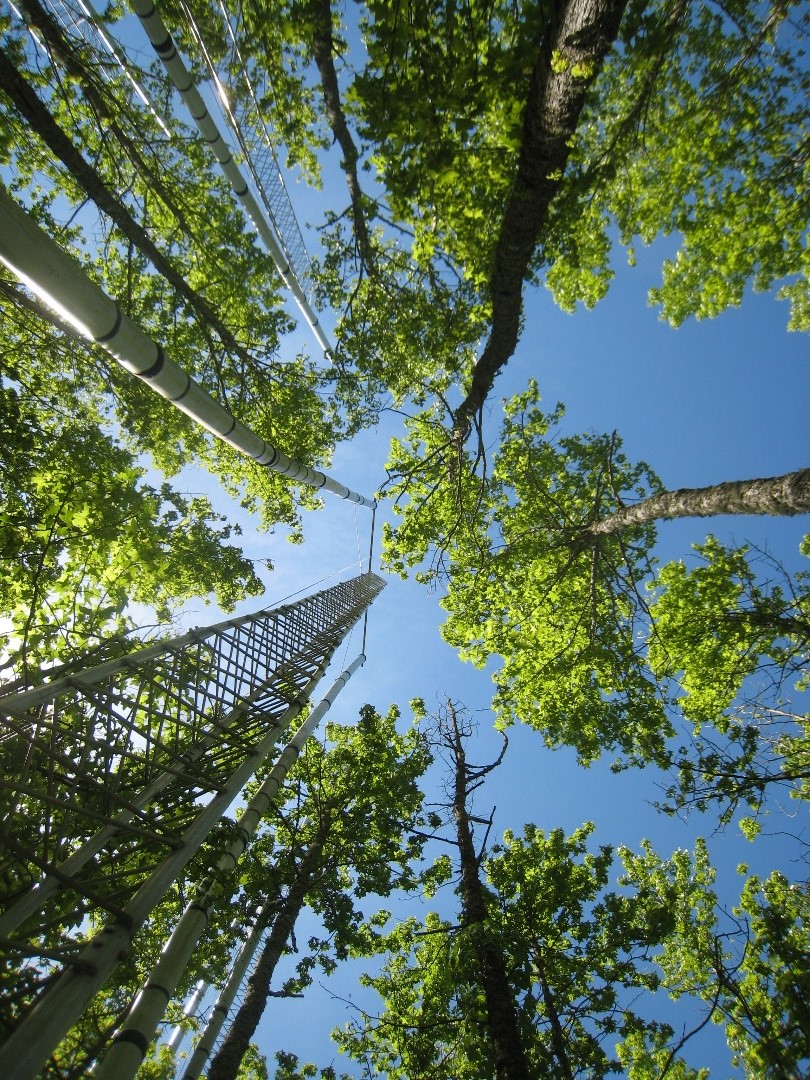Increasing concentrations of carbon dioxide in the atmosphere are boosting the uptake of carbon by plants but may decrease carbon storage in the soil.
Oak Ridge National Laboratory was among an international team, led by Lawrence Livermore National Laboratory, who synthesized 108 elevated carbon dioxide, or CO2, experiments performed in various ecosystems to find out how much carbon is absorbed by plants and soil. The research appears in the journal Nature.
The terrestrial biosphere takes up about 30% of CO2 emitted to the atmosphere by human activities each year. Whether this carbon storage on land can be sustained in the future partly depends on the extent to which elevated CO2 may increase carbon storage in plants and soils. While plant growth often increases in elevated CO2 experiments, individual studies have observed the amount of carbon in the soil can increase, remain unchanged or even decline.
"The variations in soil carbon accrual under elevated atmospheric CO2 remain poorly understood and this contributes to uncertainties in climate projections," said César Terrer, a LLNL Lawrence Fellow and lead author of the paper. "We needed to take a look at the effect of elevated atmospheric carbon dioxide on plant biomass and carbon pools through a synthesis of real-world experiments and apply state-of-the-art statistical methods to find out what drives variation in soil carbon storage across the world."
The team found that when plant biomass is strongly stimulated by increased levels of CO2 in the atmosphere, soil carbon storage declines; conversely, where biomass is weakly stimulated, soil carbon accumulates.
"This trade-off in carbon storage reflects the different ways that plants acquire nutrients," said ORNL co-author Ben Sulman, who analyzed ecosystem model simulations as part of the research. "When plants grow and sequester more carbon in their aboveground tissues, they're breaking down soil organic matter to sustain that growth. On the other hand, when plants invest less in aboveground biomass and more in root growth, they are potentially storing more of that carbon long-term in the soil."
This results in a negative relationship between aboveground plant biomass and soil carbon, in contrast to the classic paradigm in soil ecology and models which suggests plant biomass and soil carbon increase in tandem.
The results indicate that doubling atmospheric CO2 causes a stronger increase in soil carbon stocks in grasslands (8%) than forests (about 2%), even though plant biomass in grasslands responded less strongly (9%) than in forests (23%).
"Ecosystem models don't accurately reproduce this negative relationship between plant biomass and soil carbon accumulation, which implies that our projections of future soil carbon may need to be revised," said LLNL scientist and co-author Jennifer Pett-Ridge.
The study also suggests that differences in soil carbon storage are linked to the type of mutualistic microbes that plants use to pull nitrogen and other elements from the soil. "These findings point to a need to better understand and capture in Earth system models how plant root traits and microbial partners influence nutrient acquisition and carbon storage," Sulman said.
ORNL's Matthew Craig contributed data on soil carbon responses to elevated CO2 in ecosystems with different types of microbial symbioses.
Other institutions contributing to the work include Stanford University; Indiana University; Northern Arizona University; Universitat Autònoma de Barcelona, Spain; University of Exeter, UK; University of California, Berkeley; Lawrence Berkeley National Laboratory; ETH, Zurich; University of Minnesota; Western Sydney University, Australia; University of Cambridge; University of Oxford; Washington State University; Jet Propulsion Laboratory; University of California, Los Angeles; and University of Antwerp, Belgium.
The research was funded in part by LLNL's Lawrence Fellow program and the Laboratory Directed Research and Development program. ORNL's contributions were funded through the Office of Biological and Environmental Research's Terrestrial Ecosystem Science program and Free Air CO2 Enrichment Model Data Synthesis project within DOE's Office of Science.







